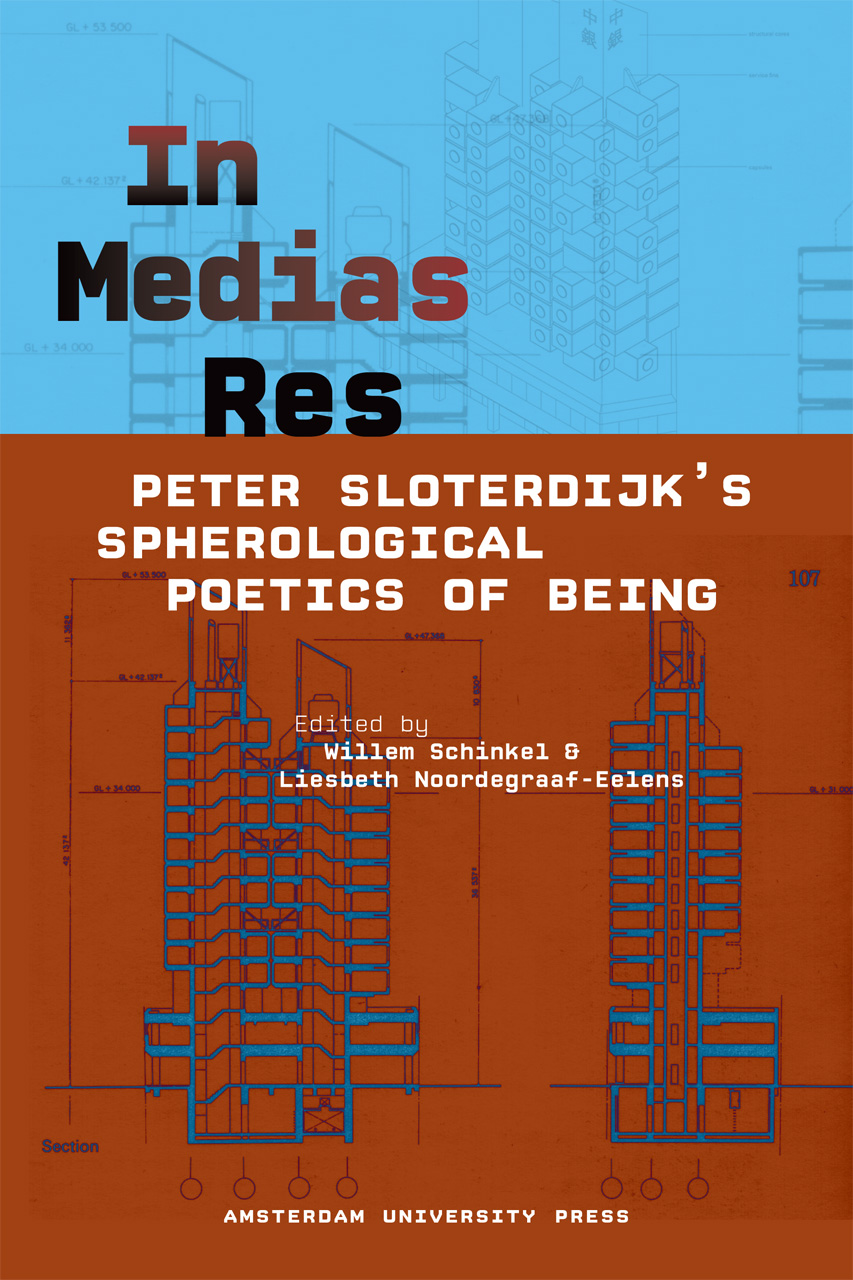Willem Schinkel, Liesbeth Noordegraaf-Eelens (eds.): In Medias Res: Peter Sloterdijk’s Spherological Poetics of Being (2011)
Filed under book | Tags: · aesthetics, attention, biopolitics, capitalism, critique, information society, mass media, philosophy, politics, posthumanism, religion, theory

“In recent years, Peter Sloterdijk has become one of Germany’s most influential thinkers. His diverse body of work includes a Heideggerian project to think “space and time,” a Diogenes-inspired affirmation of the body, and a Deleuzian ontology of network-spheres. This highly accessible collection of essays brings together a team of internationally renowned scholars, including Sjoerd van Tuinen, Rudi Laermans, Peter Weibel, and Bruno Latour, to provide a series of critical reflections on Sloterdijk’s oeuvre.”
Publisher Amsterdam University Press, Amsterdam, 2011
Creative Commons Licence BY-NC 3.0 License
ISBN 908964329X, 9789089643292
204 pages
Journal of Neuro-Aesthetic Theory, No 1-5 (1997-2011)
Filed under e-zine | Tags: · aesthetics, architecture, art, biopolitics, brain, cinema, cognition, cognitive capitalism, curating, film, mind, neuroaesthetics, neurobiopolitics, philosophy, science, theory
Journal of Neuro-Aesthetic Theory #5 (2007-11)
Neurobiopolitics, Pluripotentiality and Cognitive Capitalism, a work in progress…
View online (HTML articles)
Journal of Neuro-Aesthetic Theory #4 (2005-07)
Conference of Neuroaesthetics
View online (HTML articles)
Journal of Neuro-Aesthetic Theory #3 (2003-04)
Buildings, Movies and Brains.
View online (HTML articles)
Journal of Neuro-Aesthetic Theory #2 (2000-02)
Cinema and the Brain
View online (HTML articles)
Journal of Neuro-Aesthetic Theory #1 (1997-99)
Introduction to Neuro-Aesthetic Theory
View online (HTML articles)
Contributors: Warren Neidich, Charles T. Wolfe, Andrew Patrizio, Philippe Rahm, Meena Alexander, Michael Madore, Martina Wicklein, Martina Siebert, Norman M. Klein, Michael Salcman, Nicholas Wade, Nicholas Chase, Nathalie Angles, Martha Trivizas, Nicola Diamond, Mark Cohen, Lev Manovich, Laura U. Marks, Lucy Steeds, Mark Bishop, Olafur Eliasson, Margarita Gluzberg, Marcos Novak, M. A. Greenstein, Marquard Smith, Paul D. Miller -DJ Spooky, Vivian Sobchack, W. H. Zangemeister, Thyrza Goodeve, Warren Sack, Zoe Beloff, Yann Beauvais, William Hirstein, Stuart Brisley, Peter Brugger, Ralph Greenspan, Penny Starfield, Kodwo Eshun, Sarat Maharaj, Scott Lash, Steven Holl, Karen Beckman, Colin Gardner, Conerly Casey, Christiane Paul, Chloe Vaitsou, Daniel Blaufuks, Diana Thater, Ken Jacobs, Dennis Balk, David J. McGonigle, Charlie Gere, Armen Avanessian, Arnold H. Modell, Anjan Chatterjee, Andreas Roepstorff, Barbara Marie Stafford, Brian Massumi, Bernard Andrieu, Beau Lotto, Elizabeth Cohen and Michael Talley, John Welchman, Janet Sternburg, Elizabeth S. CohenJonathan Green, Joseph Kosuth, Andrea Grunert, Juli Carson and Lindi Emoungu, Jules Davidoff, Isabelle Moffat, Israel Rosenfeld, Francois Bucher, Eric Duyckaerts, Ellen K. Levy and David E. Levy, gruppo A12 and Francisca Insulza, Gregg Lambert and Gregory Flaxman
Initiated by Warren Neidich
Comment (0)Jussi Parikka: Insect Media: An Archaeology of Animals and Technology (2010)
Filed under book | Tags: · animal, biopolitics, biopower, biotechnology, cybernetics, deterritorialization, entomology, ethology, game theory, immanence, media archeology, media ecology, ontology, perception, philosophy, posthumanism, swarm intelligence, technology

“Since the early nineteenth century, when entomologists first popularized the unique biological and behavioral characteristics of insects, technological innovators and theorists have proposed insects as templates for a wide range of technologies. In Insect Media, Jussi Parikka analyzes how insect forms of social organization—swarms, hives, webs, and distributed intelligence—have been used to structure modern media technologies and the network society, providing a radical new perspective on the interconnection of biology and technology.
Through close engagement with the pioneering work of insect ethologists, including Jakob von Uexküll and Karl von Frisch, posthumanist philosophers, media theorists, and contemporary filmmakers and artists, Parikka develops an insect theory of media, one that conceptualizes modern media as more than the products of individual human actors, social interests, or technological determinants. They are, rather, profoundly nonhuman phenomena that both draw on and mimic the alien lifeworlds of insects.
Deftly moving from the life sciences to digital technology, from popular culture to avant-garde art and architecture, and from philosophy to cybernetics and game theory, Parikka provides innovative conceptual tools for exploring the phenomena of network society and culture. Challenging anthropocentric approaches to contemporary science and culture, Insect Media reveals the possibilities that insects and other nonhuman animals offer for rethinking media, the conflation of biology and technology, and our understanding of, and interaction with, contemporary digital culture.”
Publisher University of Minnesota Press, 2010
Posthumanities Series 11
ISBN 0816667403, 9780816667406
320 pages
Review: Jennifer Gabrys (Mute).
PDF (updated on 2012-7-15)
Comment (0)
